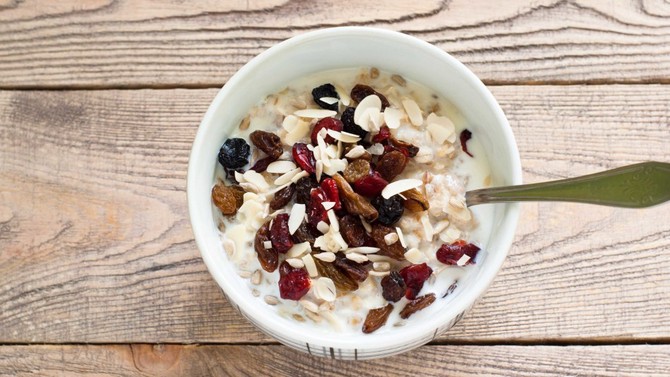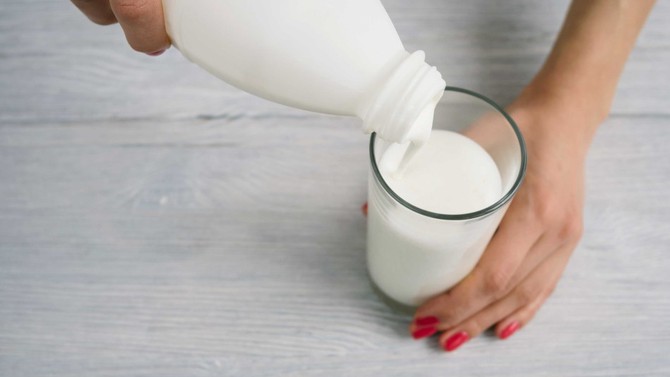8 Foods Linked to Inflammation
If you want to lower your levels of inflammation, which is linked to chronic issues like heart disease, Alzheimer's and more, step away from these.
By Emma Haak

Photo: Neustockimages/istockphoto
The Oils You Might be Cooking with, like Peanut and Vegetable Oils
What's in them: Omega 6 fatty acids
The science: Think of omega-6s as the not-so-healthy yin to omega-3s good-for-you yang. The fat molecules your body makes from omega-6 are pro-inflammatory, while the ones made from omega-3 are anti-inflammatory, according to a review in the Journal of Nutrition and Metabolism. The review authors write that the ideal ratio of omega-6s to -3s is 1 to 4, but in the past few decades, the average person's ratio has shifted to 15 to 1 (can you say yikes?). That could help explain rising rates of chronic inflammatory conditions like cardiovascular disease, non-alcoholic fatty-liver disease, obesity and Alzheimer's disease.
One more thing: Other oils that could throw off your omega-6–to–3 ratio include corn oil, safflower, sunflower, and grape seed, along with condiments like mayonnaise and salad dressings (especially ones that include those oils). If you regularly consume or cook with a lot of these items, shift your fatty acid ratio back in the right direction by cutting back on the 6s and eating more omega-3-rich foods like fatty fish, olive oil and nuts.

Photo: Nadianb/istockphoto
Your Daily Instant Oatmeal, and Your Favorite Barbecue Sauce
What's in them: Refined carbs and added sugars that send your blood sugar soaring
The science: When your blood sugar spikes, your body releases pro-inflammatory substances, and consuming foods high in the glycemic index (like refined carbs and sugars) leads to quick increases in blood sugar. (Instant oatmeal has a "glycemic load" of 21. Anything above 20 is considered high. Surprises like barbecue sauce's 11 grams of sugar per 2 tablespoons puts it high in the index too.) In a study in the American Journal of Clinical Nutrition, researchers measured the c-reactive protein (or CRP, a marker of inflammation) levels in 244 apparently healthy women and examined their daily diets. CRP levels were almost two times higher in women eating the most high-GI foods than those eating the fewest. Another AJCN study found that women eating the most high-GI foods were three times more likely to die from an inflammatory health problem.
One more thing: Other foods that are high in the glycemic index include pretzels, rice cakes, white rice and any and all sugar-sweetened drinks. (You can find a thorough list of foods and their GI information here.)

Photo: iprogressman/istockphoto
Milk With This Kind of Protein
What's in it: A protein called A1 casein
The science: If you're lactose intolerant, any type of dairy will lead to, shall we say, gastrointestinal distress. But there's evidence that A1 casein protein can trigger inflammation on top of an urgent need for a bathroom. (Cow's milk usually has both A1 and A2 casein.) In a small study in Nutrition Journal, subjects drank milk that had both A1 and A2 and milk that only had A2. The milk with both proteins was associated with higher levels of inflammation markers and more stomach symptoms, suggesting that A1 was the problem.
One more thing: Not everyone is sensitive to A1. Like lactose intolerance, which is more common among African-Americans, Asian Americans and Latinos, according to the National Institutes of Health, it varies. If milk that contains both proteins doesn't sit well with you, try one of the growing number of milks that only has the A2 type.

Photo: zeljkosantrac/istockphoto
The Bacon in Your BLT
What's in it: Saturated fat
The science: HDL, or "good" cholesterol, has an anti-inflammatory effect within your arteries. Saturated fat makes HDL less effective at that job, according to a small study in the Journal of the American Academy of Cardiology. Fourteen adults ate meals with the same number of calories but differing amounts of saturated and polyunsaturated fats. (The meal was a slice of carrot cake and a milkshake, in case you were curious.) Anti-inflammatory activity was hindered after the saturated-fat meal, while polyunsaturated fats boosted that activity. In another study, eating less saturated fat lowered participant's levels of substances that trigger inflammation.
One more thing: In addition to processed meats, saturated fat is also in lamb, chicken with the skin still on, beef, cheese, cakes, cookies and ice cream. You don't have to cut these foods out entirely, but you can follow the American Heart Association's advice of limiting calories from saturated fat to less than 7 percent of your daily calories. If you eat 2,000 calories per day, that's about 16 grams of saturated fat.

Photo: KrystynaTaran/istockphoto
Frosting and Microwavable Breakfast Sandwiches
What's in them: Trans fats
The science: Women consuming the most trans fats had CRP levels 73 percent higher than women eating the least trans fats, according to a study in the Journal of Nutrition. (The high-intake group was eating 3.7 grams per day, while the lowest consumed 1.5 grams per day, on average. For someone eating 2,000 calories daily, the American Heart Association recommends capping trans fat at 2 grams per day, roughly the amount you'd get from 3 tablespoons of canned frosting.) Another study in the American Journal of Clinical Nutrition found that the more trans fats women ate, the higher their markers of systemic inflammation.
One more thing: By the end of 2018, you won't need to worry about trans fats in your foods anymore, thanks to a ban by the Food and Drug Administration. Until then, check ingredient lists for partially hydrogenated oil, and if you're buying packaged or processed foods, look for those that say "no trans fats" on the packaging, rather than zero grams listed in the nutrition label (companies can list zero grams if a product contains less than .5 grams per serving).

Photo: bhofack2/istockphoto
The Broth You're Using for Soup
What's in it: Monosodium glutamate, or MSG
The science: When mice were injected with MSG, they developed inflammation throughout their bodies along with increased abdominal fat and type 2 diabetes. Those are dramatic results, and, of course, this study, published in the Journal of Autoimmunity, wasn't done on humans, but the researchers concluded that their findings should prompt a reexamination of whether it's really safe for MSG to be in our food supply.
One more thing: MSG can be found in chips, in addition to some broths. The FDA mandates that any added MSG has to be included on a product's ingredient list as monosodium glutamate. The bad news is that MSG also occurs naturally in ingredients like protein isolate and soy extract, and since the list of foods with natural MSG is long, it can be difficult to do a thorough check of the label before you buy something. Your safest bet when buying foods that might have MSG is to look for "No MSG" on the packaging.
Published 11/03/2016

